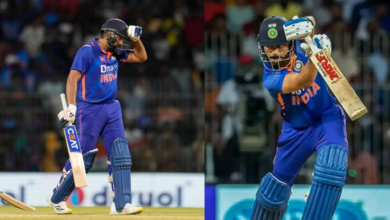
Modern-day cricket has changed leaps and bounds from what it was in earlier days. Cricket has become more competitive between the teams and one of the main reasons for this has been the rule changes.
These rule changes have brought some kind of new dimension to the game that has made it more intriguing. Some of the rule changes have removed the little ambiguity that was there in the game and has made the battle between the bat and ball fairer. Let’s have a look at five such rule changes in the 21st century.
1. Concussion substitute
Ever since the death of Australian cricketer Phillip Hughes, people have been aware of the ball hitting on the head. New rules were made about the standard of the helmet that was acceptable. However, for the first time, the use of concussion substitute was made legal by the ICC.
After a batsman gets hit on the helmet, the physio comes out and asks the batsman a few questions that are set according to the protocol. If the batsman can answer them perfectly and if he is not feeling dizzy, he can continue batting. Else he will have to make way to the pavilion. In such cases, the teams can have a like for like replacement, also known as a concussion substitute.
Such concussion substitute was seen in the Ashes Test at Lords’ in 2019 where Steve Smith was hit on the head through a thunderbolt from Jofra Archer. Thus, Marnus Labuschagne walked out to bat in the second innings as a concussion substitute.
2. Super Over
The Super Over was first introduced in T20s and then in ODIs to split the two sides in case the game ends in a tie. Each team gets one over each and the batting side has two wickets. Whoever scores the most runs in the Super Over wins the game.
Earlier there was a rule that if the Super Over scores are also tied, then the team that has hit the most boundaries in their innings goes on to win the game. Based on this boundary count rule, England controversially won the 2019 World Cup, after both their game as well as Super Over against New Zealand ended up in a tie.
After a reconsideration, this rule was modified by the ICC by scrapping the boundary count rule and stating that get another Super Over will be played if the first Super Over scores are tied.
3. Run Out scenario
Generally, a desperate dive saves a batsman in case of a close-run outcall. However, sometimes the bat bounces while hitting on the ground due to the enormity of the impact of the dive. Earlier, the rule was that if the Wicketkeeper dislodges the bails and if the bat is in the air at that point in time, the batsman is adjudged run out.
This rule seemed to be unfair since the batsman used to be given out although he had made it to the crease. So ICC changed the rule and made it clear that if a person drags his bat or any part of his body inside the crease, then he will be not out even if his bat is in the air when the wicketkeeper takes the bails off.
4. No runner allowed
Earlier in case, a batsman is injured, the match referee would then allow the batting team to call for a runner to run for that batsman. However, it was observed that some teams started taking advantage of the loopholes in the rule and deliberately used quick runners for batsmen who were not that great for running between the wickets.
Thus, the rule was changed by the ICC and made it imperative for the batsman to run on his own no matter what. If the batsman is in no position to run, he can happily walk away as retired hurt.
5. No ball to be checked by the third umpire
No balls are generally costly for a bowling side as they give away an extra run as well as there is a free hit off the next ball. However, if the no-ball is missed by the on-field umpire it becomes costly for the batting side as the game is decided by crucial margins, especially in the shortest format of the game.
On one of the games between MI and RCB in the 2019 IPL season, RCB required 7 runs to win off the last ball but could manage only a single. However, later the replays showed that the bowler Lasith Malinga had overstepped and the umpire failed to pick it up. This led to a huge controversy and the rule was changed, and it was made imperative for the third umpire to check no balls.




